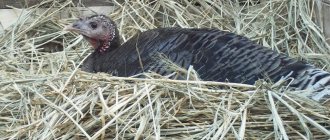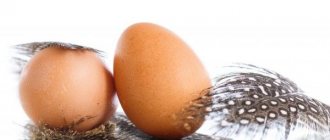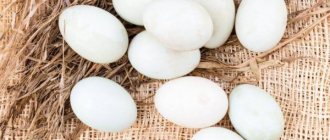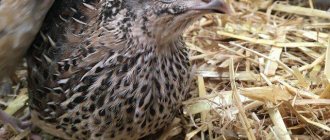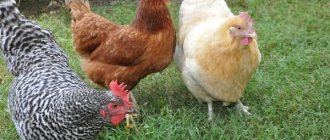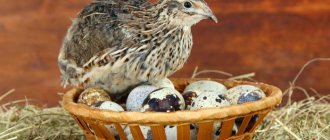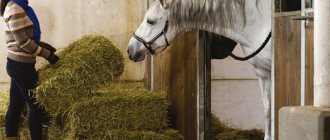1 620
no comments yet
0
Author of the article
Rasskazov Pavel
Reading time: 4 minutes
Having reached a certain age, chickens begin laying eggs. The beginning of egg laying depends on feeding, the condition of the bird, climatic conditions, the breed and orientation of the chickens. There are three important classifications: meat, meat-egg and egg (laying hens).
At what age do chickens start laying eggs?
So what do you need to know about this? In the wild, egg laying in birds begins at six months of age, however, thanks to numerous experiments, breeders were able to develop special breeds in which puberty occurs at 4-5 months. Among the most famous are the following:
- Leghorn.
- Loman Brown.
- Dominant.
- Tetra.
- Minorca.
In one year they produce about 200-300 eggs. However, here many novice farmers will have a completely natural question about how many years chickens lay eggs. It is very difficult to answer this unequivocally, since everything here depends on a number of criteria. They will be discussed in more detail below.
Factors affecting egg production of chickens
Several factors affect the productivity of egg hens:
- breed;
- the conditions in which the birds are kept;
- age;
- season;
- well-being.
Breed
As we have already noted, the largest number of eggs are laid by egg layers, the average by meat-egg layers, and the smallest by meat layers. Let's consider which breeds are the most egg-laying in their areas.
| Breed name | Annual number of eggs |
| Egg direction: | |
| Leghorn | up to 300 |
| Hisex brown | up to 320 |
| Loman brown | up to 320 |
| Isa brown | up to 320 |
| High line | up to 340 |
| Meat and egg direction: | |
| Australorp | up to 200 |
| Foxy chick | up to 250 |
| Plymouth Rock | up to 170 |
| Rhode Island | up to 170 |
| Kuchin anniversary | up to 200 |
| Meat direction: | |
| Brahma | up to 120 |
| Cochin | up to 120 |
| Corniche | up to 140 |
| Gudan | up to 160 |
| Faverolles | up to 180 |
Conditions of detention
In order to properly maintain chickens and prevent a decrease in their productivity, you need to know what parameters are required so that disturbances in the process of egg production do not occur. So, for stable productivity it is necessary to provide the following parameters in the bird’s home:
- air temperature - 18–22°C, not lower than 5°C;
- air humidity indicators - 60–70%;
- illumination - 12–14 hours of daylight.
It is important to ensure that there are no sudden changes in temperature in the poultry house, no drafts, and stable ventilation.
It is necessary to exclude overpopulation of the chicken coop, adhering to the norm of 4–5 birds per 1 square meter. m with floor keeping and up to 10 individuals per 1 sq. m during cellular living. Did you know? Hens do not require roosters to lay eggs. Males are in demand only when it is necessary to obtain chicks, that is, to fertilize an egg. When eaten, eggs that have not undergone fertilization cannot be distinguished from fertilized ones. They have the same appearance, taste and presence of valuable elements.
Chickens should be provided with fresh and clean water daily, as well as high-quality food containing all the necessary minerals and vitamins. In order for chickens to lay eggs successfully, they need to be provided with cozy nests - one for 3-5 individuals.
Poultry farms adhere to the following parameters for keeping laying hens:
- the temperature is adjusted depending on age: for chickens - 33–35°C, then a gradual decrease to 15–18°C;
- humidity - 60–70%;
- cage housing with a population density of 4.5 heads per 1 sq. m;
- automatic ventilation system with air supply in winter 0.70 cubic meters. m/h, in summer - 4 cubic meters. m/h per 1 kg of weight, air speed - 0.2–0.6 m/s in winter, 0.3–1.0 m/s in summer;
- adjustable light mode.
Season
We have already mentioned that the peak egg production of laying hens occurs in the summer, and we cited summer indicators. In winter, productivity can drop by 2 times, that is, from 1 chicken you can get 1 egg every 3-4 days. However, with proper care and feeding, the number of eggs may not decrease, or decrease only slightly.
Health and age
A chicken is able to lay the most eggs in the first year of egg production. It will no longer be possible to achieve excellent performance from it - every year the level of productivity will fall by 15–20%.
Only a healthy individual can lay the maximum number of eggs. There are many diseases that lead to a significant drop in the level of productivity or to the inability to lay eggs at all.
Recommended reading
How to treat salmonellosis in chickens
First of all, these are the following ailments:
- infectious bronchitis;
- colibacillosis;
- mycoplasmosis;
- laryngotracheitis;
- bronchopneumonia;
- cold;
- avitaminosis;
- inflammation of the oviduct;
- cloacite;
- helminthic infestation.
Also, disturbances during oviposition are provoked by a deficiency of proteins, calcium, phosphorus and other valuable elements.
What does egg production depend on?
Let's look at this in more detail. So, how many years do chickens lay eggs at home? Statistics show that on average, poultry productivity ranges from 7 to 10 years. But, as mentioned earlier, it all depends on a number of factors. The key ones are:
- characteristics of a particular breed;
- food quality;
- conditions of detention;
- the presence of parasites and any diseases;
- stress.
The presence of any of the above factors may delay the onset of egg laying. In addition, answering the question of how many years chickens live and lay eggs, it should be noted that poultry spends about 40 percent of the energy received from food to lay eggs, so it is very important to provide them with a high-quality, complete and balanced diet so that the chickens get everything they need important vitamins, minerals and nutrients.
Dates for egg laying
The time when pullets begin to lay eggs depends on many factors. This mainly concerns the living conditions - the spaciousness of the chicken coop, the availability of space for walking, the qualitative and quantitative characteristics of the feed.
The breed of bird also matters. Depending on this factor, the timing of the start of egg laying is as follows:
- egg breed - 4-5th month;
- meat and egg breed – 5-6th month, no later than 6.5 months;
- meat breed - 7.5-8 months.
A chicken begins to lay eggs when it reaches sexual maturity. This happens around the time the bird gains more than 75% of its weight. The average is 6 months, deviation in any direction depends on the breed and conditions of detention.
How many days a year does egg laying last?
What do you need to know about this? This question is no less important than how many years chickens lay eggs, since productivity directly affects the payback and profitability of the business. This is largely influenced by what breed the bird belongs to. For example, egg-laying eggs can produce up to 300 eggs per year, while for meat-bearing eggs this figure is almost 3 times lower. This difference is due to the fact that the former lay throughout the year, and the latter once every 2-3 days. However, it is important to understand that achieving such indicators at home is very difficult. Industrial enterprises strictly adhere to the technological process, and also have all the necessary equipment and qualified specialists.
Duration of egg production
Here, in fact, we have come to the answer to one of the most important questions regarding the breeding of poultry, namely, how many years do chickens lay eggs. According to experts, animals have a large supply of eggs in their bodies, which will more than last for more than 10 years. However, in practice, not everything works out as many expect. The thing is that the life expectancy of chickens in practice is only 2-5 years. During this period, the productivity of individuals decreases significantly, and the meat becomes very coarse, so the vast majority of farmers completely change the livestock 3-4 years after its breeding.
How long do roosters live?
The life of a rooster depends on sexual activity; on average, this figure reaches four years. On large farms, birds are kept for a maximum of 2 years.
The length of life is determined by the purpose in life. If it is necessary to keep the birds at the same age, and so that the productivity of laying hens does not fall, then 1 rooster for 10 hens is quite enough. If the care and maintenance of the birds is poor, then the load on the male should be reduced, and if vice versa, then increased. For 100 hens, 6 roosters are enough.
The hostess tells how many roosters are needed for the designated number of chickens, what they should be like and how long the roosters can live:
The most productive breeds
Most novice poultry farmers who are interested in how many years laying hens lay eggs at home are very careful in choosing feed and creating everything necessary for keeping the birds. However, they do not pay enough attention to the selection of specific breeds, which is a very big mistake. They try to reduce the initial investment to start a farm, so, as a rule, they purchase chickens that are not very productive. Experts say that the best breeds are:
- Leghorn.
- Tetra.
- Minorca.
- Orlovskaya.
- Plymouth Rock.
- Rhode Island.
The first three belong to the oviparous group and produce the largest number of eggs. On average, you can receive about 250-300 pieces every 12 months. However, it is important to consider that every year the figure will decrease by approximately 15 percent even with strict adherence to all breeding technology. As for the last three breeds, they are meat and egg breeders. They are valued for their versatility, as they not only produce a lot of eggs, but also gain weight quickly. In addition, the advantage of these chickens is that their productivity practically does not decrease for several years until they are slaughtered for meat.
Poultry culling
Let's look at this aspect in more detail. Above we discussed in detail how many years laying hens lay eggs, as well as what factors influence egg production. But there is one more important nuance that you should pay attention to when deciding to start farming. We are talking about culling birds. If the chicken begins to produce few eggs, then its maintenance becomes unprofitable, so the bird is sent for slaughter. It is quite easy to distinguish a good layer from a bad one. To do this, you just need to watch your players every day. You need to pay attention to the following:
- appearance;
- completeness;
- laying time.
Significant grounds for rejection are the following signs and changes:
- dirty plumage, which is evidence of an infectious disease;
- twisted keel;
- bald patches that occur due to a lack of vitamins and minerals;
- severe lack or, conversely, excess body weight;
- lethargic state;
- laying eggs at different times of the day.
Any of the above signs indicates that the bird has some problems. How many years do domestic chickens lay eggs in this case? You should not count on long-term productivity, since farm poultry has low resistance to various diseases and parasites, so when they occur, they not only begin to produce fewer eggs, but can also die quickly. In this case, it is recommended to immediately slaughter sick individuals. Otherwise, there is a high probability of an epidemic developing and the death of the entire livestock, and, as everyone knows, contaminated products cannot be eaten.
Characteristics of a Good Laying Hen
Determining a good laying hen is necessary for culling weak and unproductive individuals. A healthy individual lays eggs almost every day at the same time. Healthy birds are constantly active, have an excellent appetite, clean, smooth feathers (except for the molting period, which occurs in September).
Signs of health problems in laying hens:
- curvature of the keel, which may indicate the presence of rickets;
- bald patches in the feather cover;
- dirty feathers;
- excess or too little weight;
- weak appetite and decreased activity.
Good laying hens have a bright full comb, a straight back, and a dense belly. Such birds are always cheerful and have a proportional body structure.
Recommendations for increasing egg production
You already know how many years chickens of various breeds lay eggs. But if you want to get the most income possible from your farm, this is not enough. To ensure that egg production is high and does not decrease significantly as the bird ages, it is necessary to take some measures. Experts recommend following the following rules:
- in the cold season, when the duration of free range of poultry is reduced, it is necessary to equip the chicken coop with artificial lighting;
- the poultry house must be well insulated, since drafts not only negatively affect productivity, but can also cause the development of various diseases;
- To increase the energy value of the feed, yeast should be added to it.
Farmers should pay special attention to the quality of chicken nutrition. Egg production strongly depends on the amount of protein, vitamins and minerals consumed, so the bird’s diet must be balanced. You should not skimp on feed and buy cheap, low-quality mixtures.
Ways to increase the productivity of laying hens
Farm owners are interested not only in improving the productivity of birds, but also in ensuring that egg production remains consistently high. To do this, it is worth paying maximum attention to the conditions of keeping the chickens. A comfortable room for birds meets the following criteria:
- Good lighting - windows must be present in the poultry house, and in the fall and winter additional lighting fixtures are installed that work for 13-14 hours (more is not recommended, otherwise the bird will not have time to rest and gain strength). The best option would be fluorescent lamps.
- Air humidity is within 60–70 percent. Otherwise, the chickens feel uncomfortable and become inactive, which negatively affects productivity.
- Availability of free space. For every five heads, it is enough to allocate one square meter. In a cramped room, conflicts and fights are possible between birds - stressful situations provoke a decrease in indicators, and sometimes a complete cessation of egg laying.
- Stable temperature conditions. The chicken coop must be insulated so that the birds feel comfortable regardless of the time of year. The floor of the room is covered with a thick layer of straw, which is changed as needed. The optimal temperature in the poultry house in summer is up to 25 degrees, in winter – not lower than 15 degrees. Seal cracks in walls and floors tightly to eliminate the possibility of drafts.
- Calm environment. It is advisable to prevent other poultry and animals from entering the chicken coop.
It is important to think about the layout of the room. Opposite the windows, at a height of about 60 cm from the floor, perches are installed, and in the corners there are nests covered with hay or straw in sufficient quantity. Additionally, it is recommended to equip a walking area - to increase productivity, try to let the chickens out for walks more often, even in the cold season. Lack of movement leads to poor egg production.
Correctly selected nutrition and compliance with the feeding regime are the key to consistently high productivity. It is advisable to feed the birds in the morning, immediately after waking up, and an hour before going to bed. The chickens' diet must contain the necessary microelements, proteins, fats and carbohydrates. The main sources of nutrients are fresh greens, root vegetables, a variety of grains, and dairy products.
Keep the feeders clean, promptly replacing old food, check the water in the drinking bowls - it is necessary to provide birds with constant access to clean, plentiful drink, especially in the summer. Don’t forget to give your chickens ash and sand baths to get rid of feather mites and prevent the appearance of parasites.
Despite the fact that the decisive factor influencing the egg production of chickens is the breed, much depends on the activities of the owners. An integrated approach to nutrition, organization of a warm, comfortable room, regular monitoring of the health of pets is a guarantee of high productivity throughout the year.
Loman brown chickens
This breed is most popular among farmers around the world. This is due to the fact that it has many advantages, among which the main ones are the following:
- rapid puberty;
- unpretentiousness to living conditions and feed;
- high egg production;
- eggs are large in size and weight.
In addition to all of the above, the bird adapts perfectly to any climatic conditions, so it can be bred throughout our country. A distinctive feature of the breed is its high productivity. Despite the small body weight, sexual maturation of individuals occurs in the sixth month of life. One bird is capable of producing up to 320 eggs per year, each of which weighs about 60-65 grams, which is the maximum today. Maximum productivity is observed 3-4 months after puberty, after which it begins to gradually decrease. How long do Loman Brown chickens lay eggs? As is the case with other breeds, everything here depends on the conditions of detention and the quality of feeding. According to experts, the bird consistently produces a large number of eggs over 4-5 years.
How to extend the life of a chicken and rooster?
There are approximate figures for the life expectancy of birds, but these figures can be increased by following a few rules. Grown-up chickens are perfect as brood hens for breeding offspring or for producing large-sized eggs.
- Proper feeding. Chickens should be fed no more than three times a day. It is advisable to have dry food for breakfast, mash for lunch, and grain for dinner. One day we give oats, the second day corn, and the third day wheat.
- Plenty of light. In the summer it is already light in the chicken coop, but in winter it is necessary to install lighting. If this is avoided, the chickens will wear out in a couple of years from lack of light.
- Lack of moisture. There should be no moisture in the room, as it can cause a bacterial or fungal infection. To prevent this, ventilation must be installed.
- Air temperature. In the room where the chickens are located, the temperature should be no lower than 20 and no higher than 25 degrees Celsius.
- Disinfection. Periodic disinfection of the premises is necessary.
- Correct number of roosters per hens. It is necessary to determine exactly how many roosters are needed for chickens. Basically, 6 roosters are needed per 100 hens.
